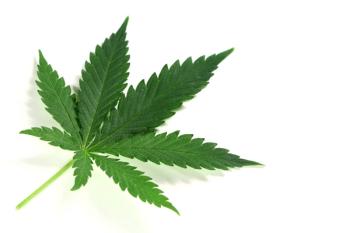
Cannabis Science and Technology
- January/February 2020
- Volume 3
- Issue 1
How to Choose the Right Instrumentation for Cannabinoid and Terpene Analysis
The “Green Rush” of cannabis and hemp continues to increase because of the medicinal and health benefits of these two plants. The two major beneficial compound classes are the cannabinoids and terpenes. This article explores the various techniques for conducting analysis of these compounds, including: integrated versus modular high performance liquid chromatography (HPLC), HPLC versus ultrahigh-pressure liquid chromatography (UHPLC), UHPLC-ultraviolet (UV) versus UHPLC-photodiode array (PDA) detectors, HPLC-UV versus quadrupole liquid chromatography mass spectrometry (LC–MS) versus triple quadrupole mass spectrometry (LC–MS/MS), quadrupole time-of-flight mass spectrometers (QTOF-MS) versus matrix-assisted laser desorption or ionization time-of-flight mass spectrometers (MALDI-TOF-MS), LC versus gas chromatography (GC) systems, and sample preparation for LC- and GC-based methods.
The “Green Rush” of cannabis and hemp continues to increase because of the medicinal and health benefits of these two plants. The two major beneficial compound classes are the cannabinoids and terpenes. This article explores the various techniques for conducting analysis of these compounds.
Integrated Versus Modular HPLC
The most widely used technique for cannabinoid analysis is high performance liquid chromatography (HPLC). HPLC systems vary by many factors, such as capacity, versatility, and price. A lower-priced integrated HPLC would be a turnkey cannabis analyzer with an autosampler, pumps, columns, and detectors all built into an integrated housing. Turnkey packages provide all the tools necessary to analyze samples on day one, including the instrumentation, methods, standards, solvents, guard columns, analytical columns, and dedicated software with custom reporting templates. A modular HPLC system provides greater versatility because components can be interchanged as needed for many other applications.
HPLC Versus UHPLC
Once the decision has been made to purchase an integrated or modular HPLC system, the next decision is to choose between conventional HPLC and ultrahigh-pressure liquid chromatography (UHPLC); each has its own advantages and disadvantages. HPLC and UHPLC can both be obtained in integrated or modular formats.
Shown in Figure 1 is a chromatogram of 11 cannabinoids by HPLC in 10 min, while Figure 2 displays the UHPLC chromatogram of 17 cannabinoids in 5 min. Table I shows examples of the cannabinoids analyzed by HPLC and UHPLC. Armed with this information, the consumer may prefer the greater efficiency of separation from the UHPLC system. However, there are other factors that must be discussed.
HPLC is a more robust method. According to the International Council for Harmonisation of Technical Requirements for Pharmaceuticals for Human Use (ICH), “The robustness/ruggedness of an analytical procedure is a measure of its capacity to remain unaffected by small, but deliberate variations in method parameters and provides an indication of its reliability during normal usage” (1). Due to the robustness of HPLC, a lower-salaried technician could be utilized in place of a higher-salaried chemist for operation, sample preparation, and maintenance. Conversely, UHPLC demands the use of the highest quality solvents (UHPLC- or liquid chromatography–mass spectrometry [LC–MS]-grade) and that samples be filtered free of particulates.
In addition to robustness, the capital and operating costs for HPLC are lower. Instrument costs for HPLC systems are approximately 20% lower than for UHPLC systems. This takes into account the allowable use of HPLC-grade solvents instead of higher-cost UHPLC- or LC–MS-grade solvents. There is a lesser need to filter the mobile phase when using HPLC. A lower frequency of maintenance is another HPLC benefit, as a 30–50% reduction in the replacement of consumables, such as seals, plungers, rotors, and stators, can be realized.
UHPLC-UV Versus UHPLC-PDA Detectors
The acronym UHPLC implies the system can be utilized either as an HPLC or UHPLC system. There are multiple types of detectors that may be used for cannabinoid analysis. This section focuses on systems based on absorbance detection in the ultraviolet-visible (UV-vis) region of the electromagnetic spectrum (190–900 nm wavelength range).
For cannabinoid analysis the most important part of the spectrum is in the UV region of 190–350 nm. The HPLC-UV is typically used to measure only a couple of specific wavelengths, such as 220 nm or 228 nm. With UV detection, confirmation of the specific cannabinoid is based on the retention time, as shown in Figures 1 and 2. The photodiode array (PDA) detector, also known as a diode array detector (DAD), can measure the entire wavelength range simultaneously, which may provide other advantages. Figure 3 shows an example of the cannabinoid spectral absorbance profiles, which can provide a second form of identity confirmation. Notice the neutral cannabinoids (delta-9-tetrahydrocannabinol [â9-THC], â8-THC, tetrahydrocannabivarin [THCV], cannabidiol [CBD], cannabidivarin [CBDV], and cannabigerol [CBG]) in the blue traces have similar spectral profiles that differ from the acidic forms (tetrahydrocannabinolic acid [THCA], cannabidiolic acid [CBDA], and cannabigerolic acid [CGBA]) shown in the red traces.
The carboxyl group (-COOH) of the acidic cannabinoids provides additional conjugation of the electron structure of the molecule. This results in longer wavelengths of the peak maximums. The PDA could be used to distinguish the neutral cannabinoids from the acidic forms, but may not be sufficiently reliable to confirm cannabinoids within the same class. Also, other cannabinoids (cannabinol [CBN] and cannabichromene [CBC] shown in the green traces) have substantially different spectral profiles based on their structures.
PDA detection has other advantages in that the spectral profile may assist in determining an unknown peak in the chromatograms, such as another cannabinoid or terpene. Full confirmation analysis should be performed by a mass detector-based system, as discussed later in this article. In the pharmaceutical industry, a PDA detector is often used to determine peak purity of the target compound. The absorbance spectra are compared at multiple points across the peak, as shown in Figure 4. Differences in the spectra can be indicative of coelution in the chromatographic peak. A peak purity index of 1.000000 indicates a pure compound is eluting. As the peak purity index becomes lower, it can be concluded that coelution of multiple compounds exists.
Peak deconvolution is another possibility with PDA detection systems. A PDA detector collects time information (the chromatogram) and spectral information (UV spectrum), shown in Figure 5. By using both sets of information, it is possible to deconvolute the data and determine the quantity of each analyte in a coeluting peak.
Deconvolution relies on sound scientific principles, not estimation based on Gaussian modeling, which has been used in the past. Figure 6 shows an example of five cannabinoid peaks being deconvoluted using Shimadzu’s Intelligent Peak Deconvolution Analysis (i-PDeA) software. Two forms of peak identification, including retention time and absorbance spectral i.d., are now easily obtained. A third confirmation of mass spectral i.d. can be obtained by adding a mass spectrometer as described in the next section.
Comparing HPLC–UV, LC–MS, and LC–MS/MS
Instead of an absorbance spectral detection of an HPLC-UV or HPLC-PDA, the analyst may prefer a mass spectrometry-based system, such as a single quadrupole liquid chromatography-mass spectrometry (LC–MS) system or a triple quadrupole mass spectrometer (LC–MS/MS), also known as tandem mass spectrometry. These types of mass spectrometers are referred to as high-speed mass spectrometers. They provide a fingerprint of the eluting chromatographic peak, especially with LC–MS/MS. A simplistic difference between LC–MS and LC–MS/MS is that the latter can assist in removing compound interferences and provide more confidence in compound identification.
Mass spectrometers can provide the analyst valuable insight with information about molecular weight and structures. For scientists in the research and development (R&D) arena, a mass spectrometer is often considered vital in the pursuit of critical molecular knowledge. LC–MS and LC–MS/MS can also be combined with a UV-vis or PDA detector to provide three forms of compound identification: retention time, absorbance spectra, and mass spectra.
Each of these techniques have a certain cost. For example, an HPLC-UV costs in the range of $40–$50K while an HPLC-PDA system is in the $50–$60K range. UHPLC-based systems usually cost about 20% more. Most quality assurance (QA) and quality control (QC) laboratories believe these instruments are sufficient. High-speed LC–MS systems are in the $100–$120K range, while LC–MS/MS systems are in the $300–$400K range and often are reserved for researchers. Many states permit using an HPLC-UV for cannabinoid analysis. An exception is Tennessee, where the Department of Agriculture requires LC–MS/MS. In addition to a clear instrument cost advantage, conventional HPLC holds numerous other advantages, including a better linear dynamic range, better detector stability, reduced frequency of calibration, and a lower operator salary level (that is, technician versus chemist).
Generally, QC labs using HPLC-UV or PDA do not use internal standards; however, some states, such as New York, require an internal standard (Norgestrel) as well as a surrogate (4-pentylphenyl 4-methylbenzoate). With LC–MS/MS, internal standards are usually a requirement. The most popular LC–MS/MS sample introduction method is electrospray ionization (ESI), but atmospheric-pressure chemical ionization (APCI) has been used as well. Finally, contract laboratories may charge in the $50 range for cannabinoid analysis, so those incentivized by money are not likely to tie up the very expensive LC–MS/MS system, unless required to do so. LC–MS/MS would be more likely used for a higher billing pesticide analysis, typically in the $225 range per sample, and for simultaneous mycotoxin and aflatoxin analysis, which yields another $75, for a total of $300 per sample.
QTOF-MS Versus MALDI-TOF-MS
Quadrupole time-of-flight mass spectrometers (QTOF-MS) and matrix-assisted laser desorption and ionization time-of-flight mass spectrometers (MALDI-TOF-MS) are referred to as high-resolution mass spectrometers (HRMS). Mass spectrometry measures the mass (m) to charge (z) ratio (m/z) in a sample. High-speed LC–MS and LC–MS/MS measures the nominal mass of a compound, while HRMS measures the exact mass to several decimal places, providing more confidence for the analysis of targeted and untargeted compounds. QTOF also has the advantage of chromatographic separation by UHPLC. A QTOF-MS system costs in the range of $400K.
MALDI-TOF-MS is a broad term encompassing a range of instrumentation types, including ion trap, benchtop and floor linear models, linear reflectron, and TOF-TOF, costing in the $150–$400K range depending on the specifications. MALDI-TOF does not utilize the chromatographic separation power of the previously discussed techniques, so high resolution is very important.
Cannabis consists of more than 500 compounds with over 140 cannabinoids and over 200 terpenes. It also contains hydrocarbons, sugars, nitrogenous compounds, fatty acids, flavonoids, amino acids, aldehydes, ketones, esters, steroids, protein, elements, pigments, and vitamins. High resolution is important for targeted and untargeted compounds.
LC Versus Gas Chromatography Systems
As described above, LC may be the gold standard for cannabis analysis. However, gas chromatography (GC) systems have been reported to have better sensitivity and higher throughput than LC systems. But, because of the heated injection port and column, GC methods can only provide “total â9-THC” as the â9-THCA is converted to the â9-THC. The same is true for any of the acidic cannabinoids, such as CBDA and CBGA, which will be converted to the neutral forms for CBD and CBG, respectively. It should be noted that â8-THC and THCV are
not converted to â9-THC.
Figure 7 shows a chromatogram of Shimadzu’s 11-cannabinoid premix standard, which has only eight peaks because the three acidic components of THCA, CBDA, and CBGA have been converted to the neutral forms. Many analysts find this unacceptable, since the cannabinoid concentrations in the original sample are missing some information. It should be noted that adding a headspace sampler to a GC coupled to a flame ionzation detector (FID) or GC–MS allows its utilization for terpene and residual solvents analysis in the cannabis and hemp industries and may still be required in many instances.
Cardenia and colleagues (2) reported on the derivatization of the acids to stabilize the structure and increase volatility for analysis by GC–MS. The authors reported the analysis of 10 cannabinoids, including the three acidic cannabinoids. The derivatization step may be automated with the use of the proper autosampler.
Professor Kevin Schug and his colleagues at the University of Texas, Arlington (3–5) have coupled a GC and GC–MS to a vacuum ultraviolet (VUV) detector from VUV Analytics. The VUV region of the spectrum is below 200 nm, and the working region of the authors was 120–240 nm, well below the HPLC-PDA region of 190–400 nm discussed earlier, which provided additional information. The electrons are excited from one energy level to a higher level such as ï³–ï³* (sigma to sigma star transition) for alkanes, n–ï¹* (n to pi star transition) for O, N, S and halogens, and ï¹–ï¹* (pi to pi star transition) for unsaturated alkenes. In their publication, they showed GCVUV and GC–MS-VUV could analyze the neutral and acidic cannabinoids, but the later compounds would require derivatization.
As a bonus, the authors showed they could measure terpene isomers using the GC–MS-VUV system, measuring terpene alcohols, terpenes with single, double, and triple bonds, oxygenated terpenes with double bonds, and ethers, ketones, and aromatic terpenes (3–5).
Sample Preparation for LC- and GC-Based Methods
As cannabis and hemp are analyzed for cannabinoids, sample preparation depends on the sample type. As described above, LC systems have been the gold standard. Sample preparation for analysis of concentrates is quite simple, typically only requiring a dilution in solvent. For flower, the sample preparation may involve extraction with one solvent and dilution with another solvent. Homogeneous foods such as gummies may also involve a solvent extraction with solvent dilution, which are relatively easy procedures.
The difficulty arises when the foods are nonhomogenous, such as energy bars that may contain chocolate, almonds, peanut butter, and caramel. Different foods can require different sample preparation methods depending on the components of salts, sugars, sweeteners, fats, natural products, coloring, additives, preservatives, cholesterol, fiber, and so on. For LC, sample preparation would usually require a multiple step process: grinding into a homogeneous mixture, dissolving in a solvent, and then solid phase extraction (SPE). The SPE steps then consist of:
- conditioning a cartridge with a solvent, followed by
- conditioning with water,
- applying the sample to collect the target compounds on the cartridge while the rest goes to waste,
- washing the cartridge with water to remove impurities, and
- extracting the target compounds by washing the cartridge with solvent.
This is very time consuming and varies depending on the matrix.
A pyrolyzer (PY), used for thermal desorption, can be added as the sample introduction device to a GC–MS. PY-GC–MS can be used to characterize complex materials at trace levels, often without any sample pretreatment. Because of the direct sample introduction and the chromatographic separation, it is possible to analyze very small amounts and collect detailed, unique information, which would generally require significant sample preparation.
Sample preparation could be as simple as weighing the nonhomogeneous food sample into a sample cup and having the autosampler drop the cup into an oven between 100–300 °C, which is high enough to vaporize the cannabinoids but low enough to leave behind higher boiling interfering compounds. Depending on the matrix, the sample may require grinding and, possibly, a liquid extraction step, but sample preparation steps are minimized compared to LC and LC–MS sample preparation steps.
Conclusion
HPLC-based systems have been the gold standard for cannabinoid analysis because they offer a variety of selections between HPLC and UHPLC, integrated or modular formats, photometric detectors such as UV-vis and PDA or DAD, and mass spectrometry detectors such as MS, MS/MS, and QTOF-LC–MS, with each component having advantages and disadvantages. GC and GC–MS-based methods are improving by reducing sample preparation with thermal desorption sample introduction for cannabinoid and terpene analysis utilizing VUV detection.
Future experiments should involve combining PY-GC–MS with GC–MS-VUV for faster sample preparation analysis of edibles with three forms of confirmation with retention time, mass spectral identification, absorption spectral identification for cannabinoids and terpenes, and faster chromatography.
References:
- ICH Harmonised Tripartite Guideline prepared within the Third International Conference on Harmonisation of Technical Requirements for the Registration of Pharmaceuticals for Human Use (ICH), Text on Validation of Analytical Procedures (1994).
- V. Cardenia, et al., J. Food Drug Anal.26(4), 1283–1292 (2018).
- A. Leghissa, Z. Hildenbrand, and K.A. Schug, J. Sep. Sci.41(1), 398–415 (2018).
- A. Leghissa, J. Smuts, Q. Changling, Z. Hildenbrand, and K.A. Schug, Sep. Sci. plus.C1, 37–42 (2018).
- C. Qiu, J. Smuts, and K.A. Schug, J. Sep. Sci.40, 869–877 (2017).
About the Authors
Bob Clifford, PhD, is the General Manager of Marketing at Shimadzu Scientific Instruments in Columbia, Maryland. Craig Young is the HPLC Product Manager at Shimadzu Scientific Instruments. Alan Owens is a Senior GCMS Product Specialist at Shimadzu Scientific Instruments. Jim Mott, PhD, is a Field Tech Support Supervisor at Shimadzu Scientific Instruments. Rachel Lieberman, PhD, is the Forensics Marketing Manager at Shimadzu Scientific Instruments. Direct correspondence to:
How to Cite This Article
B. Clifford, C. Young, A. Owens, J. Mott, and R. Lieberman, Cannabis Science and Technology3(1), 34-42 (2020).
Articles in this issue
almost 6 years ago
Vapes: What Are You Actually Inhaling?almost 6 years ago
Dispelling Cannabis Analysis Calibration Mythsalmost 6 years ago
Five Steps to Prepare Cannabis Testing Laboratories for ISO 17025 Auditsalmost 6 years ago
Debugging the System: Understanding Pests, Pest Control, and Pesticidesalmost 6 years ago
Ask the Experts: Cultivationalmost 6 years ago
New Year, New CannabinoidsNewsletter
Unlock the latest breakthroughs in cannabis science—subscribe now to get expert insights, research, and industry updates delivered to your inbox.




